A White Paper is a detailed report used by businesses or companies to provide research and statistically backed information about a product, service, or solution it offers.
These are widely used for marketing purposes and to position the company as an expert to be recognized within its particular field.
The term “white paper” was first used in England to refer to government-issued reports that government agencies used to present credible findings of research exhaustively. Other institutions commonly known to use them in the past are financial institutions, NGOs, and consultancies.
Today, they are also used by businesses in different fields such as consultancy, B2B, or any other for content marketing. Therefore, white papers are non-promotional tools that use technical language to create interest in a business and what it offers. Basically, any organization involved in content marketing can make use of templates to achieve its set out goals.
Information and opinions should be based on original research or reliable sources to present a unique philosophy or approach towards a specific topic. The report can identify ways through which the company outperforms others in the same field to promote the company’s thought leadership or an authoritative position in the particular field. Alternatively, it can simply provide new insight or information related to their particular field.
Templates
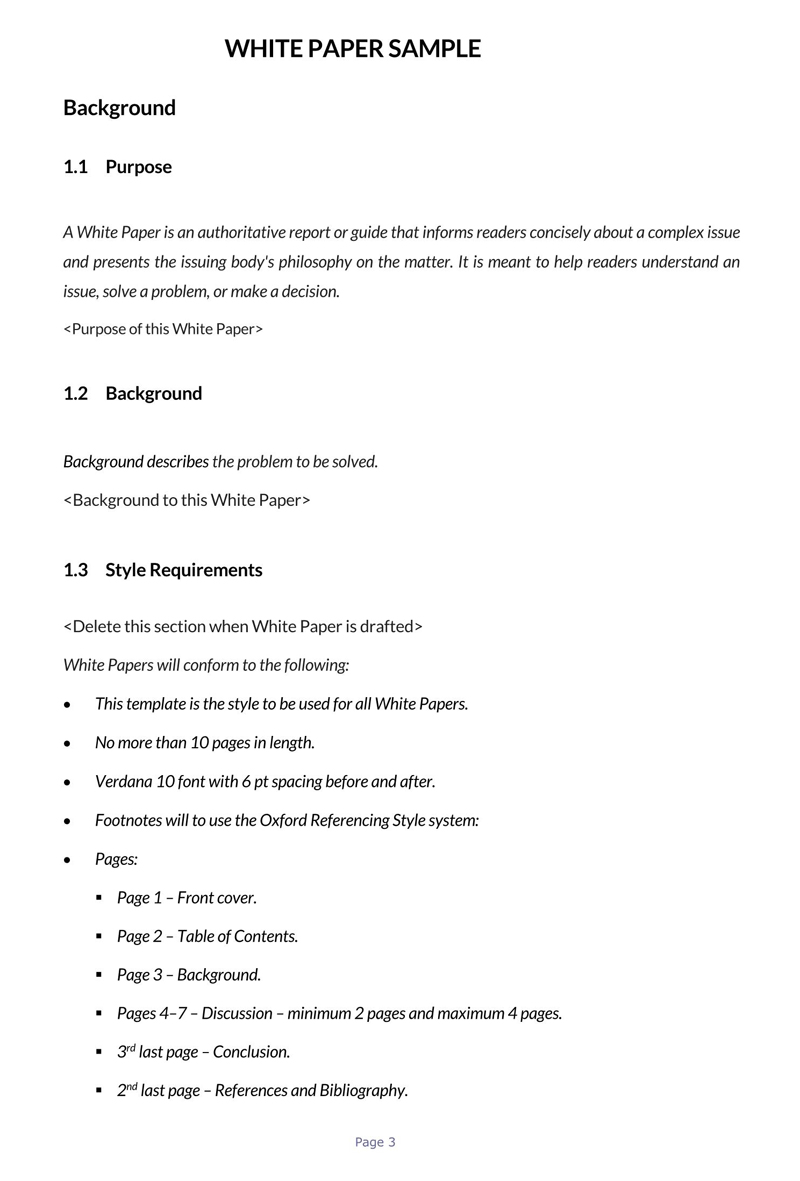
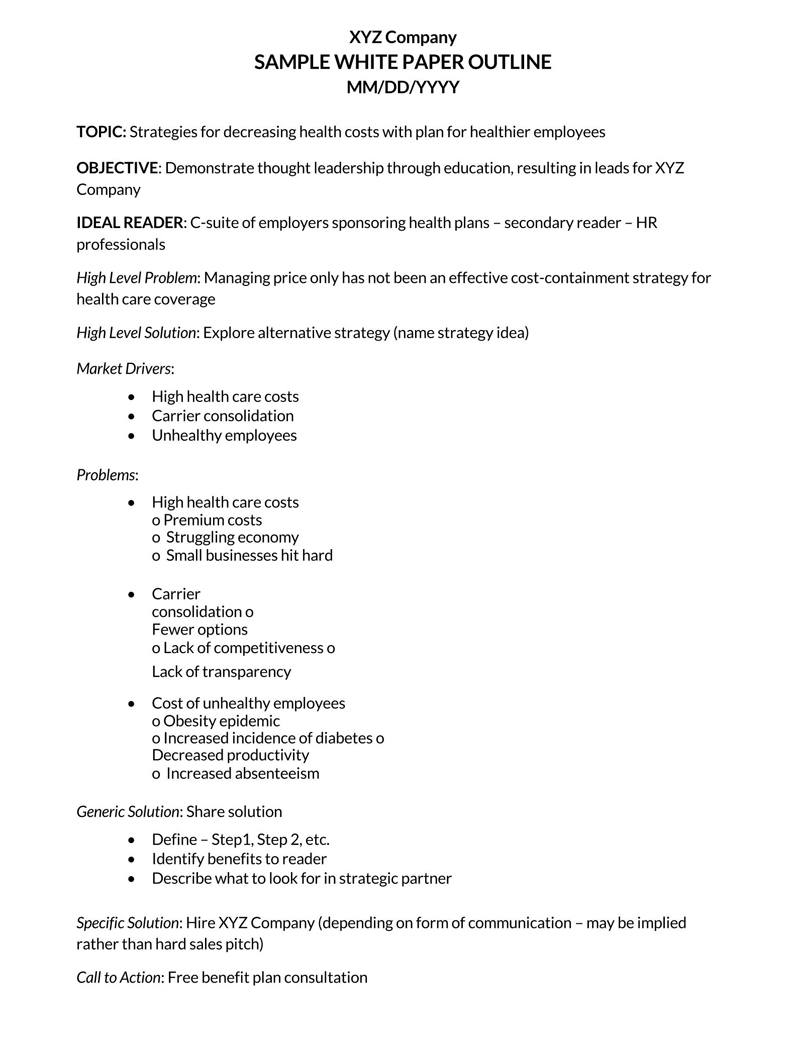
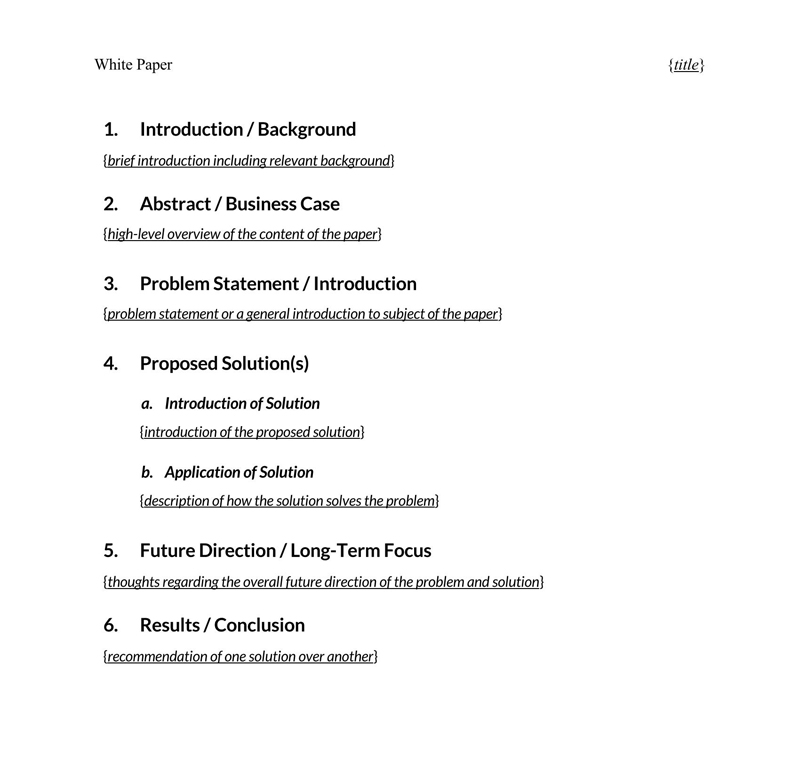
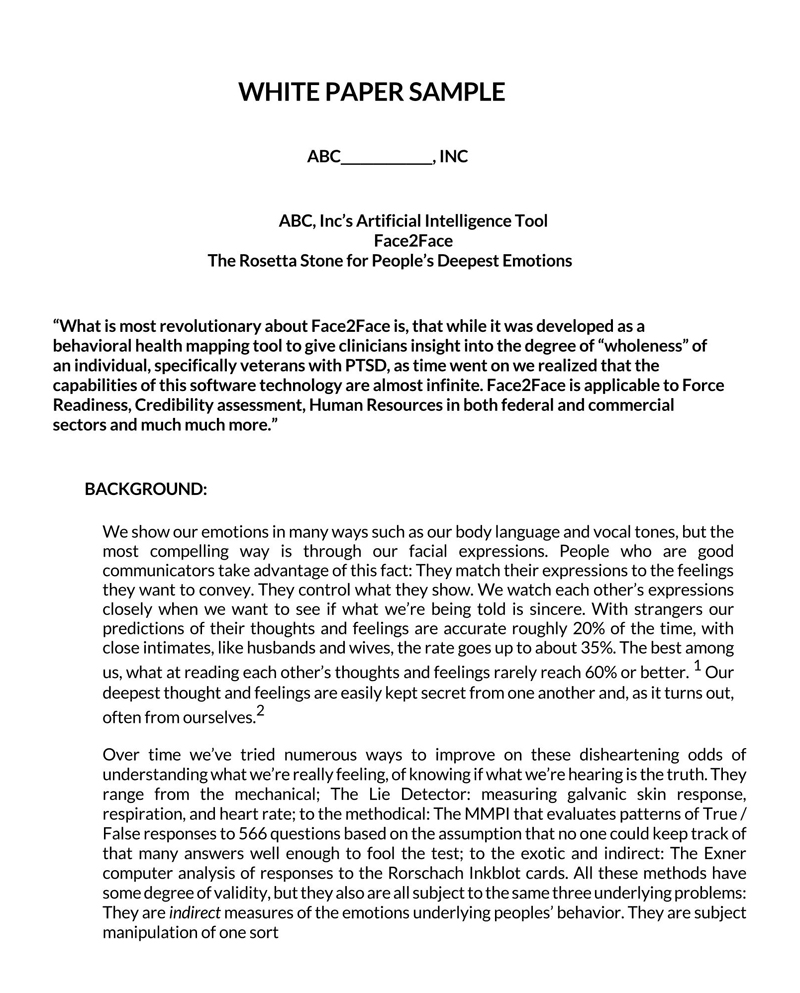
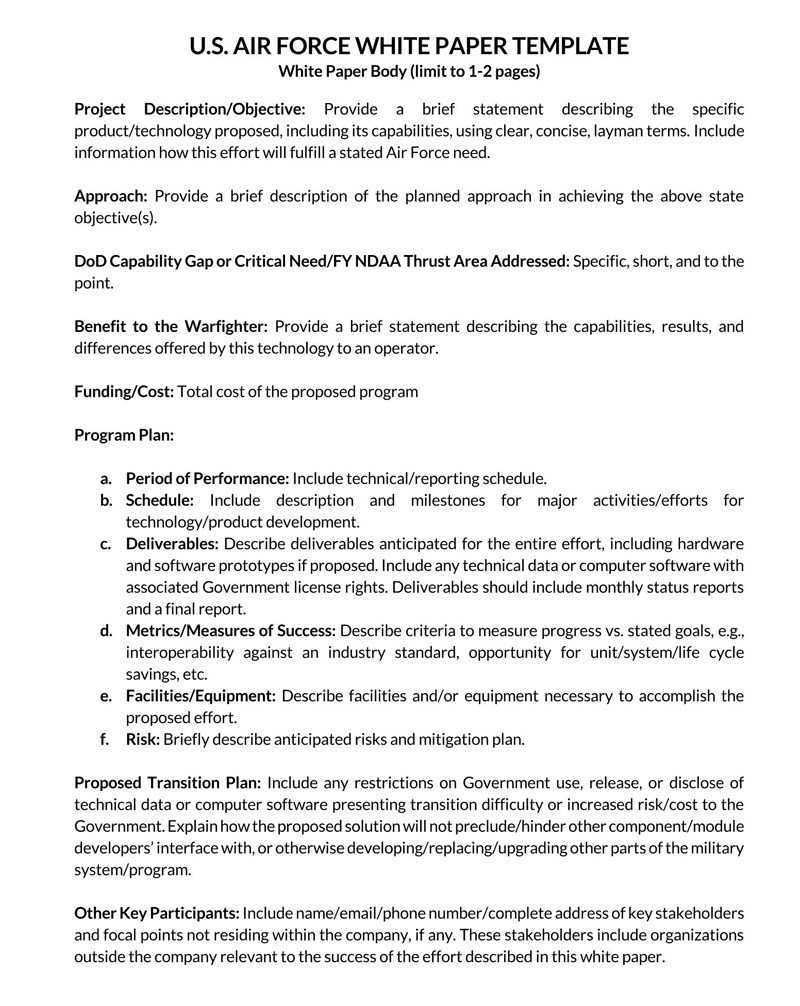
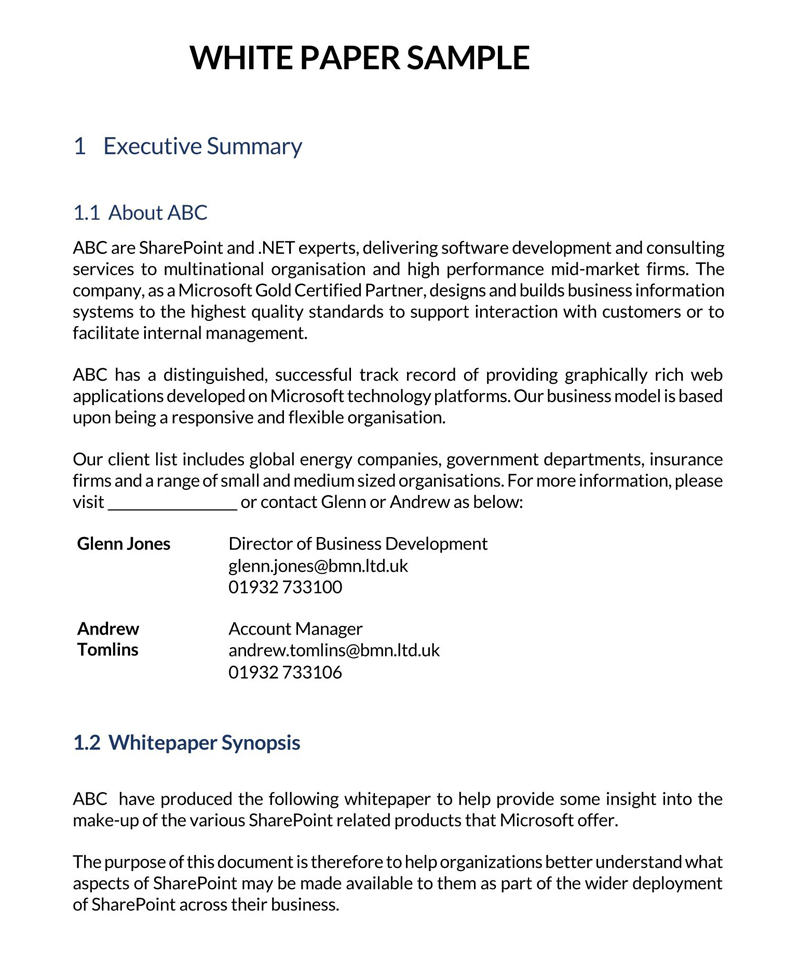

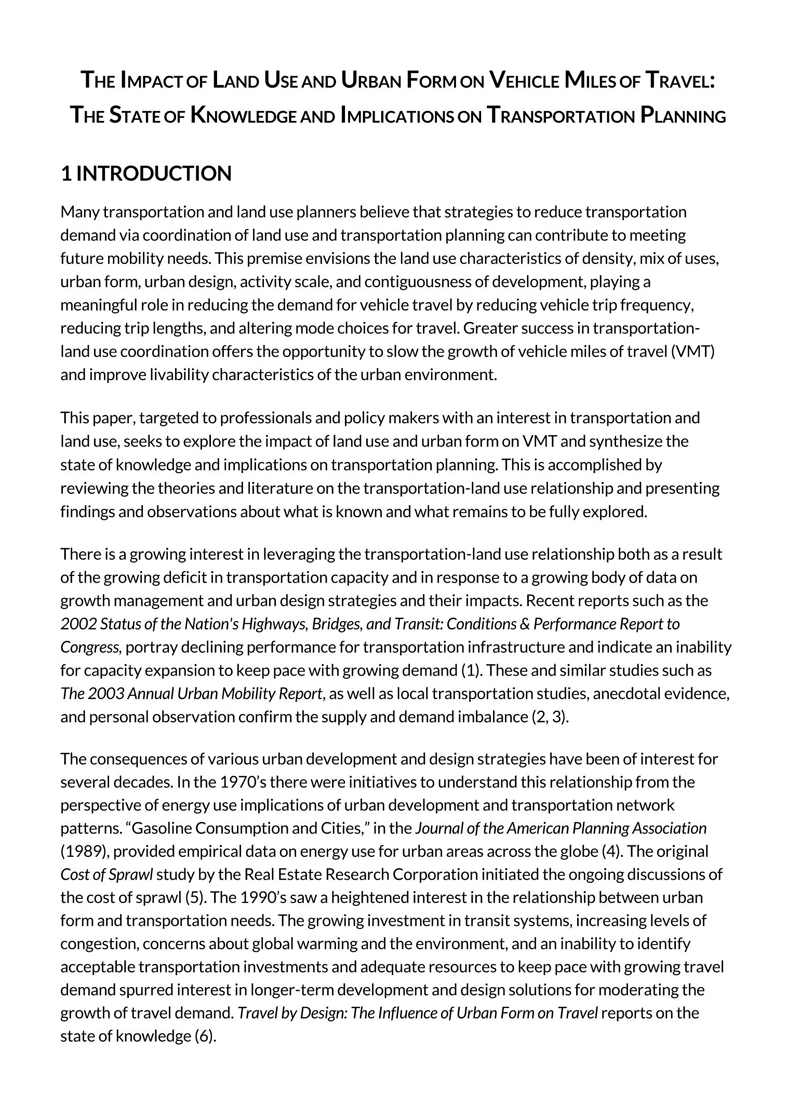
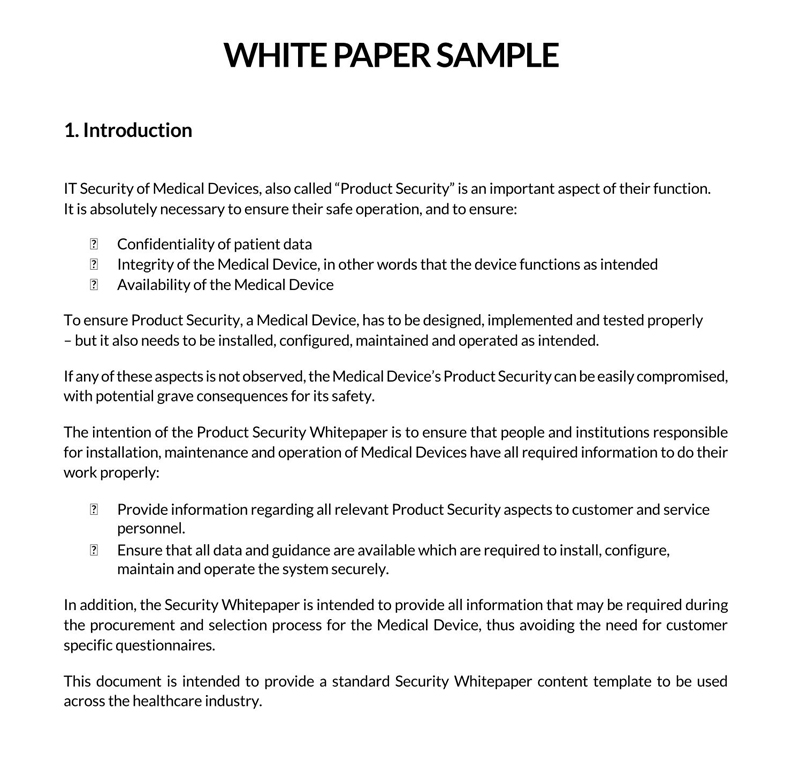

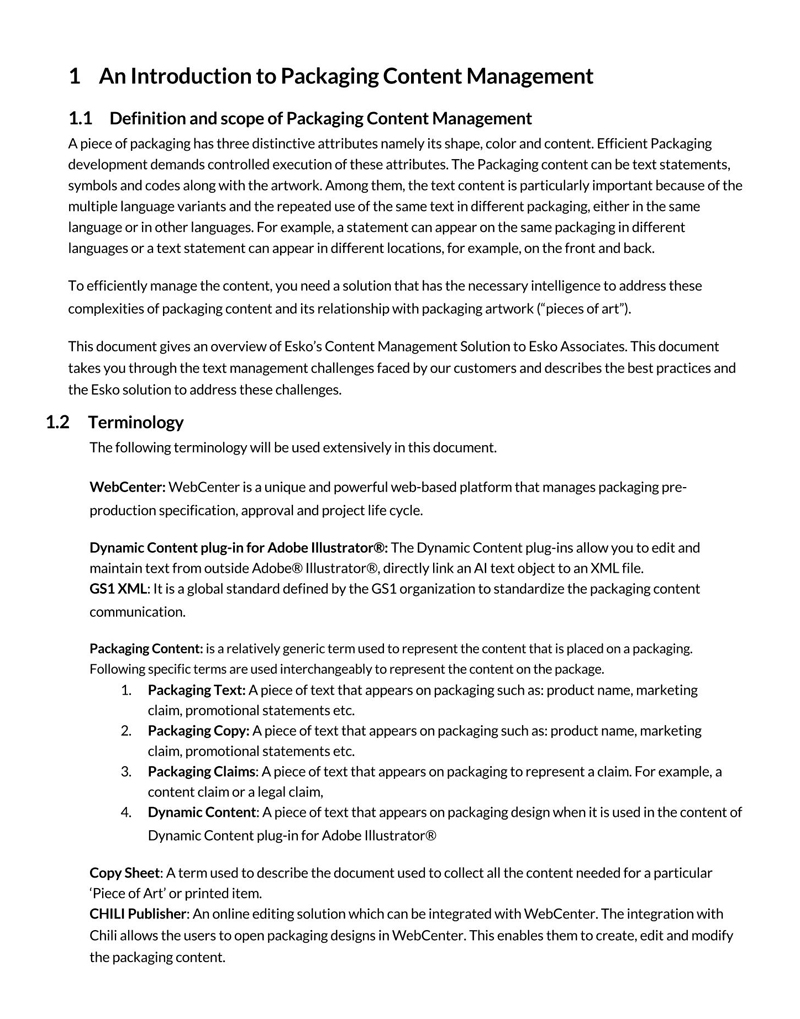

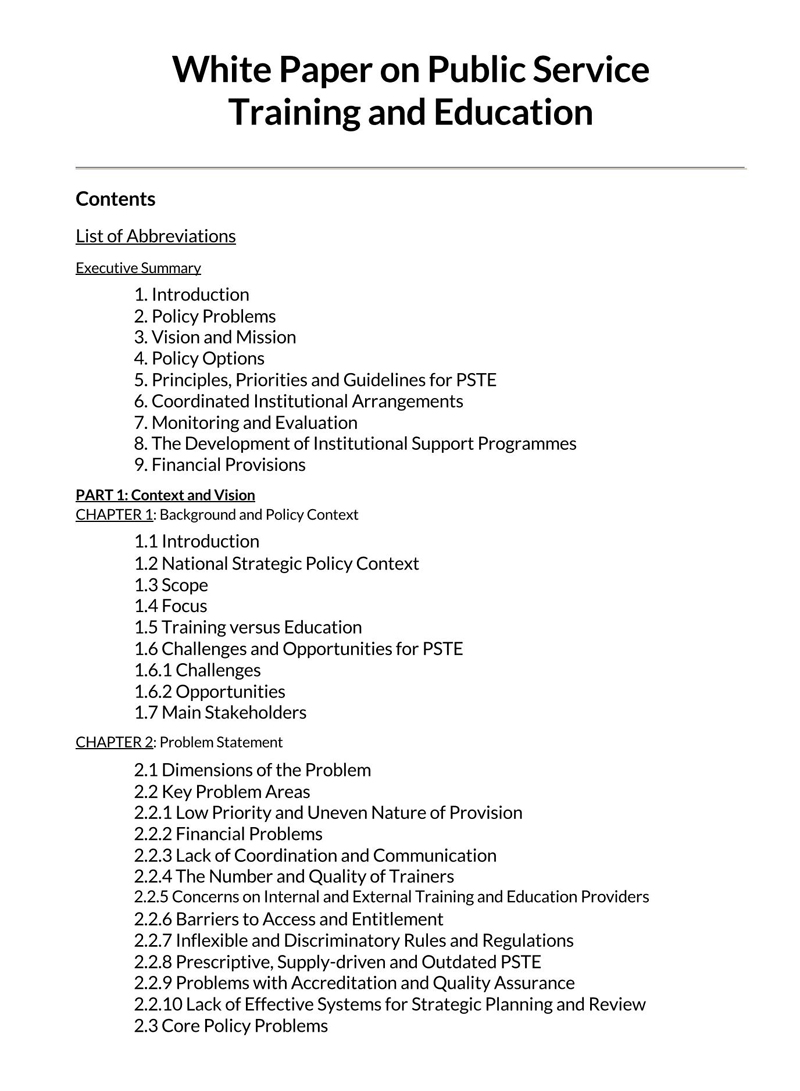

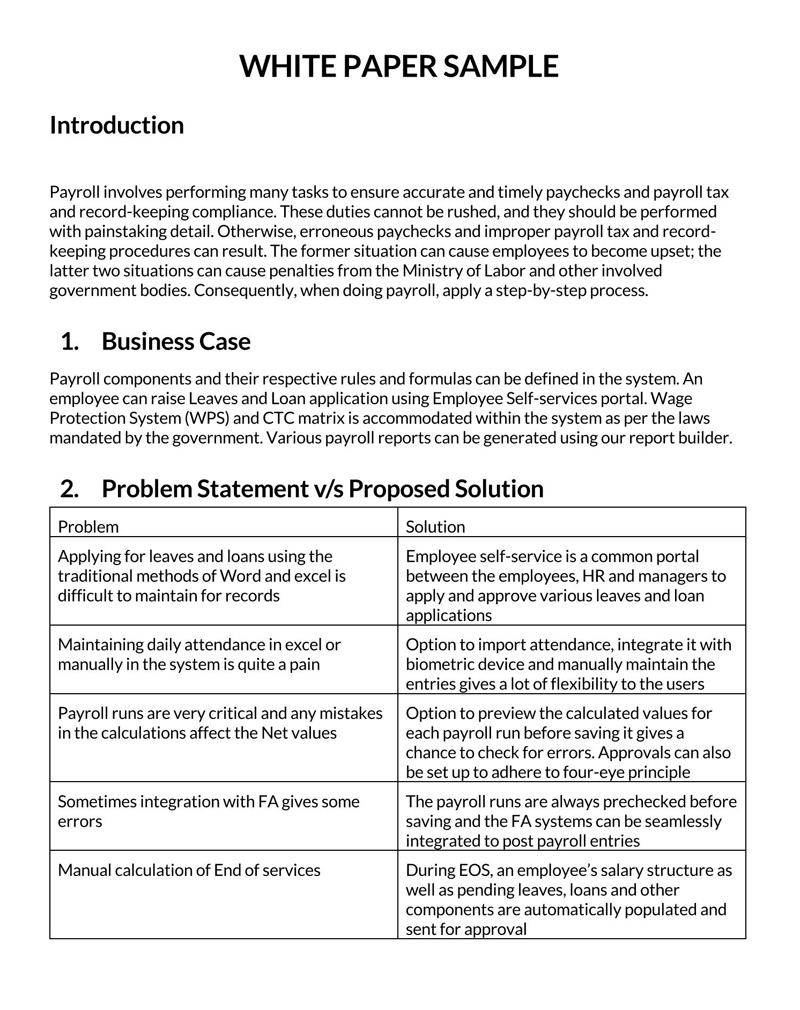
Types
White papers are versatile, and their contents will usually be dependent on the set-out objective. As a result, there are diverse types. However, regardless of the type, These should illustrate the business’s proficiency in its field.
Two common types are:
Backgrounder
A backgrounder type focuses on the benefits of a product, services, or unique methodology a business is adapting to solve customer pains. This type will therefore be more authoritative or persuasive in nature.
Problem-solution
A problem-solution highlights a company’s approach to solving an existing problem in the respective field. This type takes a more informative approach. There are other different types that are used to summarize useful information and statistics about a product or process or a specific research field.
How to Create a Perfect White Paper
It is meant to accomplish different objectives at once. To ensure this happens, information must be collected from in-depth research, and this information must be formatted to relay the right information comprehensively.
Use the steps given below to create an exceptional paper:
1. Prepare a strategy
The first step is to have a well-laid-out strategy that highlights how the steps will follow each other. The steps can be as follows; collecting enough details from research, defining objectives, developing a narrative arc, creating an outline, and finally, polishing the final draft.
2. Execute the strategy
Next, implement the strategy and write up your white paper. Ensure that the narrative established is maintained throughout the report. You can come up with several drafts before having a satisfactory one. Once a white paper that meets the predetermined objectives has been written, proceed to design the report to effectively accomplish its intended purpose.
3. Formatting
Formatting a white paper involves multiple actions that improve its readability. The information in the report needs to be presented in a manner that sparks the target audience’s interest.
Follow the steps discussed below to format:
3.1 Prepare a glossary
Now that it is exhaustively written and well-formatted, a glossary can be created to highlight details included in it to ensure the reader’s attention is captured from the get-go. The glossary can be designed in bold colors to capture the readers’ attention and communicate key information of the document.
EXAMPLE
Readers can know the order in which information has been placed. Ensure to use one color for the entire page to help it stand out in case the reader is skimming through the document.
3.2 Create the title page
Ordinarily, the cover page will be the first thing readers see when interacting with the white paper. The cover page plays a vital role in creating interest in the audience and influencing them to advance with reading the rest of the document. The cover page should give enough but not too much of what they should expect in the document.
The following components should appear on the title page:
- Company logo
- Title of the document
- Authors of the report
- Companies or analysts involved in the research process
- Date of publication
Create a captivating easy-to-read title page.
3.3 Identity standard protocol
Information can be organized into sections that discuss key topics in the report: specific subjects, topics, ideas, products, or services. A well-sectioned report allows readers to pick out different details at a glance. Use a consistent protocol for subsections.
3.4 Break out important sections
Next, separate the document into different sections that need to be input as stand-alone pages. Such sections include key takeaways, visual data, or any other. Note that these sections don’t necessarily need to fill up the whole page, but it’s alright if they do too.
3.5 Include photos
Photos are crucial in creating a connection between the customer and the document. They also help keep the audience engaged enough to want to go through the white paper. Visual aids help create a lasting image in the reader’s mind, which is significant in using it as a marketing tool. Try to utilize high-quality photos that resemble or resonate with the target audience as much as possible.
3.6 Highlight key information
Afterward, use color to bring key information such as headings and market keywords to the reader’s attention. A trick to do this is using a neutral background color such as white or light grey and writing the key points in vibrant colors. A color that reflects the company’s brand can also be used as it helps the readers to associate the paper with a product or service.
pro tip
Avoid red as it is commonly associated with edits in a document.
You can also consult our templates provided below to understand the coloring and highlighting techniques.
3.7 Choose a background pattern
The background is another way of getting the reader’s attention. Try out different patterns and colors that are eye-catching and more engaging.
EXAMPLE
Minimalistic background patterns and colors such as white and light grey have grown popular. However, a plain background with a consistent color theme will sometimes be enough. Another important consideration is to ensure the chosen color matches the company’s brand.
3.8 Prepare one-pagers
Once the background design is completed, create one-pagers equally as detailed but in a summarized manner. Ensure the information provided is equally informative as the general report. State the product or process being discussed and how the customer can optimally utilize the product or service. One-pagers are easy to distribute to buyers and can be used by the sales teams to reference the paper quickly.
3.9 Add page numbers
The next step is numbering the document’s pages. Numbering the pages makes it easy for readers to locate information and adds to the document’s overall outlook. Make the numbers legible. A table of contents can then be developed. Use hyperlinks that direct readers to the specific topic they are interested in.
3.10 Emphasize section headers with icons
To further simplify locating information, use icons to highlight section headings. The icons can be tailored to reflect the information being discussed under the particular topic. Icons are captivating to the eyes and thus break the monotony of reading plain text white papers.
3.11 Add visuals
Data is a crucial element of increasing customer confidence in a brand. At the same time, plain data can be too monotonous and lackluster for the target audience. Therefore, using visual aids to present data is an effective way of engaging with the readers and relaying the crucial takeaways from the data.
There are different types of charts used to present different types of statistical data.
EXAMPLE
Graphs, histograms, pie charts, etc. pictograms can also be used to present data.
4. Include a call to action
To engage with the audience further, you can invite them to review the document by posing a question or CTA (call to action) on the front page. The question should prompt the readers to seek answers in the document. The question can be written in bold to ensure they do not miss it.
5. Save your document as a PDF file
Lastly, before sharing the document, ensure that you save it from being accessible if needed in the future. Save it as a PDF file. It is not a one-time document and can be used in future reports, case studies, and research. Or you can also download the pre-formatted templates that are provided below to save your time.
Do’s and Don’ts
To ensure the company reaps the benefits, some things should be considered before, during, and after writing the document. This article looks into some of the dos and don’ts of writing an outstanding white paper.
Do’s you should keep in mind
Below are things that anyone writing the paper should try as much as possible to incorporate into their writing process:
Pick the right topic
It is always advisable to select a topic before commencing the writing process. Any topic can be a topic as long as it meets the following three criteria; it must be something the author is qualified to talk about, resonate with the target audience, and fill a “content gap” – where little or nothing has been written about the topic.
The first two criteria are most crucial because readers will not read something that is of no interest to them, and writing what you don’t know will result in a weak white paper that doesn’t generate any leads or improve the brand.
Do define your audience
The target audience must be clearly defined. Remember, It is meant to be written with the audience in mind; therefore, knowing exactly who you are writing for can help determine the type of information that shall be input into the document. Determine who the audience is and describe them by highlighting shared aims and pains among them.
The contents of the document should be relevant to the specific target audience. Use demographic factors such as age, gender, level of professionalism, and other customer profiling characteristics to narrow down to a specific target audience.
Pack it with value
A well-crafted template should give the reader sufficient and valuable information about a business’s product, service, or solution. You should not be trying to sell the products or services to the reader but rather inform them about the same, even if they are not converted to paying customers.
The document should have substance and show the author’s familiarity with the topic, not just any information that can be obtained from other multiple sources.
Keep it interesting
Keep it as engaging as possible. The report should not just be another novel the reader has to read to obtain information. Use any creative writing and design technique to engage the reader throughout the document. Get their interest from the get-go and work to maintain it until the end of the document.
Do research adequately
To gather useful information, research is a must when writing the papers. Basic research will often not be enough, and as a result, you have to spend time conducting thorough research to acquire information that will be useful to the target audience. Due to the heavy use of statistical data, you may have to go through multiple scholarly works to get factual data.
Do keep mobile visitors in mind
Create a template that takes into account the different devices from which readers can read the white paper. Some will read it from PCs, others on tablets, and others on mobile phones. If the document is not accordingly formatted, the type of device can affect its legibility, consequently affecting its effectiveness.
Share the document in a format that will be feasible with the responsive design of web pages. The layout of a responsive design and font size adjusts itself to fit the user’s device’s screen. In the past, web pages layout used to remain unchanged while the size was scaled to fit the user’s device, which ended up compromising the legibility of the content.
EXAMPLE
PDF format is usually too rigid and doesn’t adjust to different screens, thus negatively affecting mobile traffic.
Design for your audience
Always design the paper for your target audience. Try to avoid sounding so self-centered where you are talking about what you want to say, not what the audience wants to know. Prioritize their interests. Align design and writing elements such as colors, tone typography, layout, font size, page order, placement of images or information, and jargon of the document with the target audience.
Choose the right tools
There are multiple tools for creating white papers that authors can use. Each tool will be better suited for a different purpose and skill set. For that reason, you must select one that best suits your particular requirements; this ensures minimal time is used to create an exemplary paper.
Highlight key information
Always try to highlight key information in the paper because most readers will often be looking for the most useful information in the document without necessarily reading it from start to end. Alternatively, highlight key details that get them excited to want to read the document.
Things you should avoid
Some of the things to avoid when preparing a white paper are as follows:
Don’t be scared of multiple drafts
More often than not, you will not get it satisfactorily correct with the first draft. Therefore, multiple drafts can be prepared before the final document is finished. Don’t be afraid of making mistakes by creating a poor design or an average-looking design.
If you still find a design unsatisfactory after creating it, note down its shortcomings and determine ways to improve it. Edit drafts of the template until you get a design that meets your requirements.
You can write as many drafts as necessary; it is better to invest a lot of time creating a good paper than developing a substandard paper too fast. Have another expert go through the document and make necessary changes if needed before sharing the final report.
Avoid crafting it to sound like a sales pitch
A white paper is not a sales pitch. Do not try to sound like you are trying to sell something to the readers. Instead of trying to sell, aim to help them understand better a product, service, or solution.
Don’t choose a poor design
As you can see in the templates provided below, you should not neglect its design aspect. Even though readers will ordinarily be interested in the document’s contents, its design is a “gateway” into the document. Poor designs discourage the reader and can lead them to dismiss the entire document all the same. Try to use the correct color combinations and visual aids.
Don’t tell a story
As much as there is a correlation between ideas in the document, avoid telling stories and simply provide useful information logically and holistically. Having a narrative helps the reader navigate through the different sections of the document. However, all details must be kept factual.
Don’t leave it abstract
Do not leave the paper’s findings in theory. Instead, illustrate how feasible they are to the reader. Use examples if necessary to illustrate the practicability of the findings.
Avoid putting too much information
Due to the different design and writing techniques used in writing a white paper, it is easy for things to clutter within the document. To avoid such a situation, choose what information to prioritize, and once this information has been provided and there is space to add other details, you can add them to the design. Prioritized information must be sufficient to relay what was intended in the first place.
Don’t just use images for decoration
Any photos, icons, and illustrations used should be intentional such that they convey a particular concept, mood, message, or picture that needs to be communicated to the audience. Be objective with the colors and images used in the document.
How Useful can it be for Your Business
A white paper can benefit a business in more than one way. Generally, it improves its credibility to customers and increases business authority in its field.
It facilitates these two aspects in the following ways:
Builds trust
These are effective tools for reassuring the customers that a company is adequately experienced and fully capable of delivering products or services as expected. This way, trust is built between the audience and the company
Boosts sales
It is also used as a communication tool. Potential customers can go through it to understand how a business can benefit them or help solve their problems. Consequently, this increases sales because customers who were previously unaware of the company’s existence get to know its existence and capability.
Useful for lead generation
These are impressively effective in generating leads for a company. More people are willing to interact with a company after reviewing the paper than having to read analyst reports, case studies and eBooks, infographics, and podcasts due to the trust built through a white paper.
Frequently Asked Questions
Gated content is any content whose access is limited to specific people who had to provide personal details such as name and/or email address to the author or creator of the content. A preview or a brief description will usually be provided for everyone, and anyone interested in accessing the content will have to input the requested details.
White paper distribution is the process of identifying appropriate channels for sharing them directed to a targeted audience and making the document visible in those channels. The most common traction channels are social media avenues such as Facebook, Twitter, etc. Distribution ensures that it is accessible to the people who are interested in its contents. For example, keywords and hashtags are distribution methods for search engines and social media, respectively.
Tracking them helps with converting new leads to paying customers. You can track the leads by observing the actions a prospect undertakes on the website, which will often indicate the stage in a buyer’s journey they are in, and then you can carry out actions that aim to help them achieve their objective. To help track leads, tools such as Google Analytics can be used to observe prospects’ behavior after visiting your website.
When following up leads, the method to use will depend on the customer’s journey where the customer interacts with the white paper. Any leads generated should be nurtured; meaning the organization should proactively keep in touch with the potential customers to increase the chances of converting them to paying customers.
Examples of ways to follow up leads include enrolling customers in email follow-ups to notify them of new information related to their topic of interest, awarding them special offers or exclusive deals, or using sales representatives to contact customers directly by phone calls.
A white should be long enough to cover useful information adequately, and as a result, there is no one size fits all. However, most white papers will be 3 -20 pages long, and they can be longer than that.




